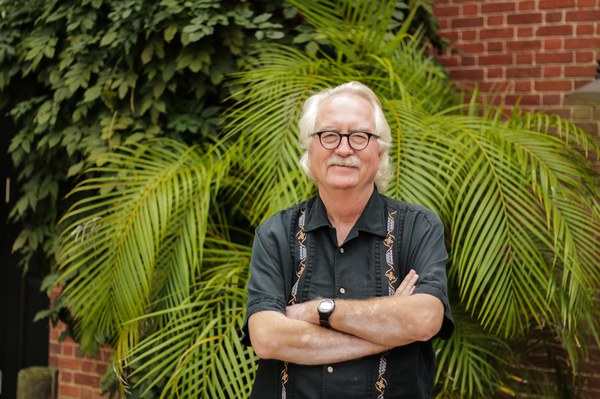Jerry Moore, a professor of anthropology at California State University, Dominguez Hills, is a fellow in Pre-Columbian Studies at Dumbarton Oaks this fall. His academic and archaeological work focuses on prehistoric cultural landscapes and built environments. On September 25, Moore delivered his research report, “Ancient Andean Houses: Dynamics of Domestic Space in South America.”
Q&A with Jerry Moore
Could you give an overview of the relationship between ethnicity and architecture in the ancient Andean world, at least as it relates to your work?
That’s a tough place to start, because ethnicity is just one kind of identity that gets expressed in people’s homes. I think the starting point for an inquiry like this is to just be attentive to how much happens in the home. Rather than thinking of any example of domestic architecture as a straightforward and unproblematic reflection of a given dimension, like ethnicity, I’m trying to look at the multiple intersections between social dimensions and the different materials in Andean houses.
One of the things I wanted to make sure everyone understood in my talk is just how diverse the Andes are. The Andean cordillera stretches from the tropical Caribbean all the way to the sub-Antarctic Tierra del Fuego, so it should come as no surprise that there is a lot of diversity in the houses Andean people create, and the different materials they use—materials that come with their own properties. There are certain things you simply cannot do with a house made of bamboo that you can with a house made of stone, so your ability to use the house as an expression of ethnicity or social identity or whatever encounters that material limit. That’s why I think it’s so important to understand houses from a multifaceted perspective, rather than focusing exclusively on ethnicity—or any other factor, for that matter.
As for your archaeological approach, what kind of evidence are you looking for?
It differs by the material, and it also varies in counterintuitive ways. For example, I’ve worked in two different regions on the coast of Peru: the Casma Valley, an irrigated strip with arid desert on both sides, and the Tumbes Valley, a region of dry tropical forest. The houses in the Casma Valley were made of river canes, while those in Tumbes were in many cases wood, with really durable upright posts. If you think about that, you’d expect a much more robust archaeological signature to be left by the wooden house than the cane house, but it turns out that in fact the opposite is the case. The reason is that that wood tends to get reused and recycled by other people. The cane walls get eaten by termites and sandblasted, but the stubs of the walls are all left, because what are you going to do with that?
In your talk you mentioned an association between modular housing and enforcing ethnic anonymity. I was hoping you could speak more about that.
In my talk, I was trying to ask, did the Inca empire employ a modular housing strategy simply because that was an easy way to get buildings built, or was it part of a strategy to erase the distinctions between forcibly relocated populations? These are populations whose differences were actively signaled by different hairstyles, clothing, and whatnot, but for some reason they seem to have been largely erased when it came to building houses. I’m really intrigued by that. Why would the home be the target of that strategy? Why would you do it there and not, for example, require everybody to have exactly the same headdress, or the same clothing? I don’t have an answer to that; I’m only about twenty-five percent into the project, so there’s a lot of questions that I still don’t have answers for—but that’s the way the process works.

